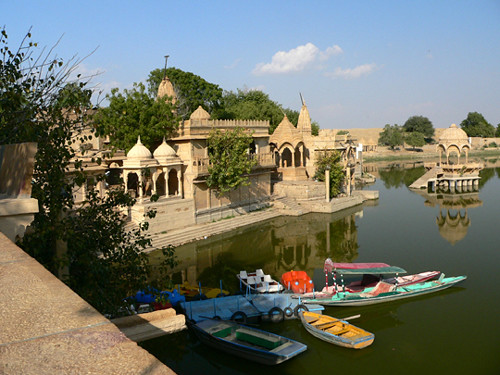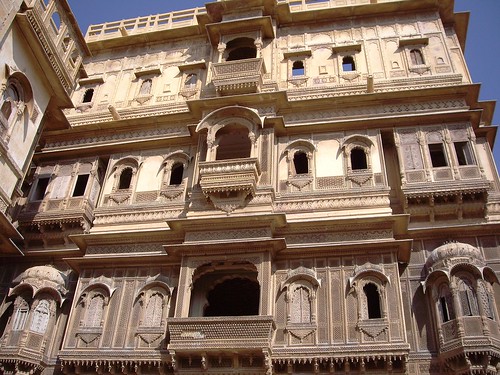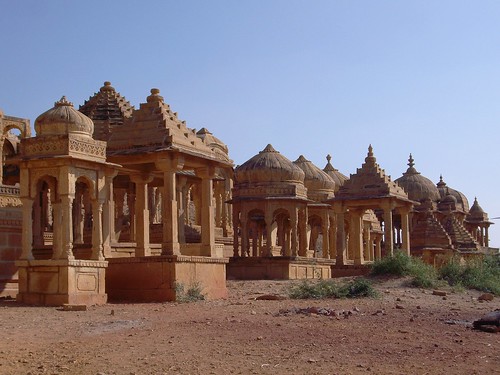In the midst of the great Thar desert in Rajasthan to the northwest of India, stands a city that seems to have been part of the desert itself, since all its golden sand-colored buildings depict a landscape that is camouflaged with the surroundings. This is Jaisalmer, one of the best rated cities in recent years tourist aspect, offering a journey through time and history desert of India.

Photography by Mahatma4711
The stunning scenery that makes up the walled city was built of sandstone with many details that astound visitors, looking like a great golden city established in the desert.
It was founded in 1156 on the hill Trikuta, located in the spice trade route, a fact that would facilitate their growth. To guard against any invasion that might stalking the city, were built up high walls about 35 meters high, stretching over 450 meters long and 230 meters wide, preserving the buildings of greater value.
Unfortunately the city was in full oblivion after 1970, when he opened the port of Mumbai, facilitating trade by one half and discarding the mobilization of Jaisalmer traveled routes, leaving low-forgotten and deep poverty. Later, thanks to increased tourism, the city returned to grow and revitalize, as its architectural heritage is highly appreciated, as well the various safaris on camels which are usually practiced in the area.

Photography by ? l u m i è r e ?
In Jaisalmer will see a large number of buildings of similar structure and style, but never get tired. Among the most important buildings, are the Havelis, mansions of magnates of those times (between 1800 and 1930) which helps implement all their wealth in their large homes, demonstrating the power and luxury to its finest.
The structure of the Havelis is located around an open courtyard, which provides ventilation for the entire residence. At the ground level are public spaces, while the plants are to be located, large bedrooms connected by wooden ladders.
Other buildings that are worthy of appreciation are the Jain temples, which have a great style with influences from India, unlike the palaces and residences, which show considerable influence from Mongolian and Islamic. Your details, scales and textures are worthy of being referred to, as they have an absolute attention to detail reflected in the faith of Jainism.
Finally include the Grand Palace, located in the center of the village hidden in various nooks and lanes which show the magnificence of the incredible building that stands among the myriad of buildings.

Photography by ? l u m i è r e ?
The same has 7 floors connected by courtyards and galleries that allow the ventilation and lighting of the property. Their strange shapes, arches and eaves are a set of luxury and attention to detail that characterizes it. The interior simply denotes the wealth and power of its inhabitants, in some cases decorated with tiles brought from Holland, generating a connotation of dream and fantasy.
Enjoy you trip!
Leave a Reply
You must be logged in to post a comment.
Recent Comments